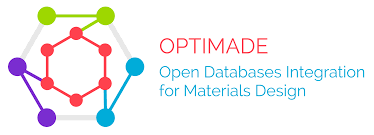Generating and managing inputs
Contents
4. Generating and managing inputs#
Learning Objectives
For larger and more complex projects it is beneficial to automate the generation of input nodes, rather than manually creating them. We would also like to be able to manage the inputs in a structured way, so that we can easily find them and change them.
In this section we will look at methods for generating input nodes in a more automated fashion, and how to manage them using groups and extras.
In the previous section, we generated the inputs for a calculation manually, by reading from a previously written input file.
For more complex calculations though, it is likely that we would like to automate the input generation process.
In this section, we will see the some methods for generating the inputs for a PwCalculation automatically.
Show cell content
from local_module import load_temp_profile
data = load_temp_profile(name="input-gen", add_sssp=True, add_structure_si=True)
data
AiiDALoaded(profile=Profile<uuid='cde64d0a219549029207c2227fee5909' name='input-gen'>, computer=None, code=None, pseudos=SsspFamily<1>, structure=<StructureData: uuid: 012f0bef-d866-4fc6-bfc1-e58a8128c45e (pk: 86)>, cpu_count=1, workdir=PosixPath('/home/docs/checkouts/readthedocs.org/user_builds/aiida-qe-demo/checkouts/latest/tutorial/local_module/_aiida_workdir/input-gen'), pwx_path=PosixPath('/home/docs/checkouts/readthedocs.org/user_builds/aiida-qe-demo/conda/latest/bin/pw.x'))
4.1. Importing structures from external databases#
AiiDA ships with a number of plugins that allow you to import structures from external databases.
These plugins are called importers and are available in the aiida.tools.dbimporters module.
As an example, let’s import a structure from the Crystallography Open Database (COD).
from aiida.tools.dbimporters.plugins.cod import CodEntry
entry = CodEntry("http://www.crystallography.net/cod/1526655.cif")
structure = entry.get_aiida_structure()
structure.get_pymatgen()
Structure Summary
Lattice
abc : 5.381 5.381 5.381
angles : 90.0 90.0 90.0
volume : 155.80772134100002
A : 5.381 0.0 3.294912213105954e-16
B : -3.294912213105954e-16 5.381 3.294912213105954e-16
C : 0.0 0.0 5.381
PeriodicSite: Si (0.0000, 0.0000, 0.0000) [0.0000, 0.0000, 0.0000]
PeriodicSite: Si (1.3453, 1.3453, 1.3453) [0.2500, 0.2500, 0.2500]
PeriodicSite: Si (-0.0000, 2.6905, 2.6905) [0.0000, 0.5000, 0.5000]
PeriodicSite: Si (4.0358, 1.3453, 4.0358) [0.7500, 0.2500, 0.7500]
PeriodicSite: Si (2.6905, 0.0000, 2.6905) [0.5000, 0.0000, 0.5000]
PeriodicSite: Si (1.3452, 4.0358, 4.0358) [0.2500, 0.7500, 0.7500]
PeriodicSite: Si (2.6905, 2.6905, 0.0000) [0.5000, 0.5000, 0.0000]
PeriodicSite: Si (4.0358, 4.0358, 1.3453) [0.7500, 0.7500, 0.2500]
AiiDA also works closely with the Open Databases Integration for Materials Design (OPTIMADE) consortium, which provides a common REST API for querying a number of databases for structures.
from local_module.optimade import count_structures, get_providers, yield_structures
get_providers()[["name", "description"]]
| name | description | |
|---|---|---|
| id | ||
| cod | Crystallography Open Database | Open-access collection of crystal structures o... |
| mc3d | MC3D - Materials Cloud three-dimensional cryst... | Curated set of relaxed three-dimensional cryst... |
| mp | The Materials Project | The Materials Project OPTIMADE endpoint |
| mpds | Materials Platform for Data Science | A highly curated Pauling File dataset based on... |
| nmd | novel materials discovery (NOMAD) | A FAIR data sharing platform for materials sci... |
| odbx | odbx | The Open Database of Xtals is run by the group... |
| omdb_production | Open Materials Database (omdb) production data... | This is the main production version of the Ope... |
| oqmd | The OQMD | The Open Quantum Materials Database endpoint |
| jarvis | JARVIS-DFT | JARVIS-DFT is a materials property repository ... |
| tcod | Theoretical Crystallography Open Database | Open-access collection of theoretically calcul... |
| twodmatpedia | 2DMatpedia | 2DMatpedia, an open computational database of ... |
We can also use the OPTIMADE plugin to query the COD database for a structure.
count_structures("cod", 'chemical_formula_hill = "Si" AND nelements = 1')
25
# for structure in yield_structures("cod", 'chemical_formula_hill = "Si"', max_results=2):
# print(structure)
4.2. Importing Pseudopotential families#
The aiida-pseudo package provides a number of pseudopotential families that are available for download.
These install a full set of pseudopotentials for all elements into the AiiDA profile as a Group.
$ aiida-pseudo install sssp -x PBE -p efficiency -v 1.1
They can later be loaded:
from aiida import orm
family = orm.load_group(label="SSSP/1.1/PBE/efficiency")
family
SsspFamily<1>
4.3. Using Groups#
We can view all groups in our profile using the verdi group list command:
%verdi group list -a --all
PK Label Type string User
---- ----------------------- ------------------ --------------
1 SSSP/1.1/PBE/efficiency pseudo.family.sssp user@email.com
Groups are a powerful feature of AiiDA, allowing you to organize your data in a flexible way. They can be used to organize nodes into sets, or to assign nodes as members of subgroups. You can add any nodes to a group, and any node can be in multiple groups.
Lets create a new group
%verdi group create my_group
Success: Group created with PK = 2 and label 'my_group'.
Now we can add a set of structures to the group:
group = orm.load_group("my_group")
other_structure = data.structure.clone().store()
for structure in [data.structure, other_structure]:
structure.store()
group.add_nodes(structure)
%verdi group show my_group
----------------- ----------------
Group label my_group
Group type_string core
Group description <no description>
----------------- ----------------
# Nodes:
PK Type Created
---- ------------- ---------
86 StructureData 1s ago
87 StructureData 0s ago
4.4. Adding extras to nodes and querying for them#
We can add extra information to nodes using the extras dictionary.
This is a flexible way to add additional information to nodes that is not part of the node’s provenance model,
i.e. these can be modified after the node is stored (as opposed to other data).
group = orm.load_group("my_group")
node: orm.Node
for node in group.nodes:
node.base.extras.set('structure', 'silicon')
AiiDA provides a powerful query system that allows you to search for nodes based on their properties, and location in the provenance graph.
We can gather all the structures we tagged as silicon using the QueryBuilder:
query = orm.QueryBuilder()
query.append(orm.Group, filters={"label": "my_group"}, tag="group")
query.append(
orm.StructureData,
with_group="group",
tag="structure",
filters={"extras.structure": "silicon"},
project="*",
)
query.all(flat=True)
[<StructureData: uuid: 012f0bef-d866-4fc6-bfc1-e58a8128c45e (pk: 86)>,
<StructureData: uuid: 60ee2a23-550b-4fa5-b49b-aebbd753175d (pk: 87)>]
See also
The Query Builder documentation provides more information on how to use the QueryBuilder,
and the features available.

